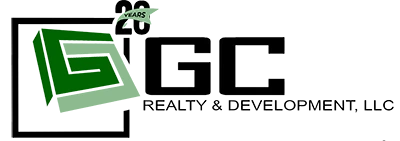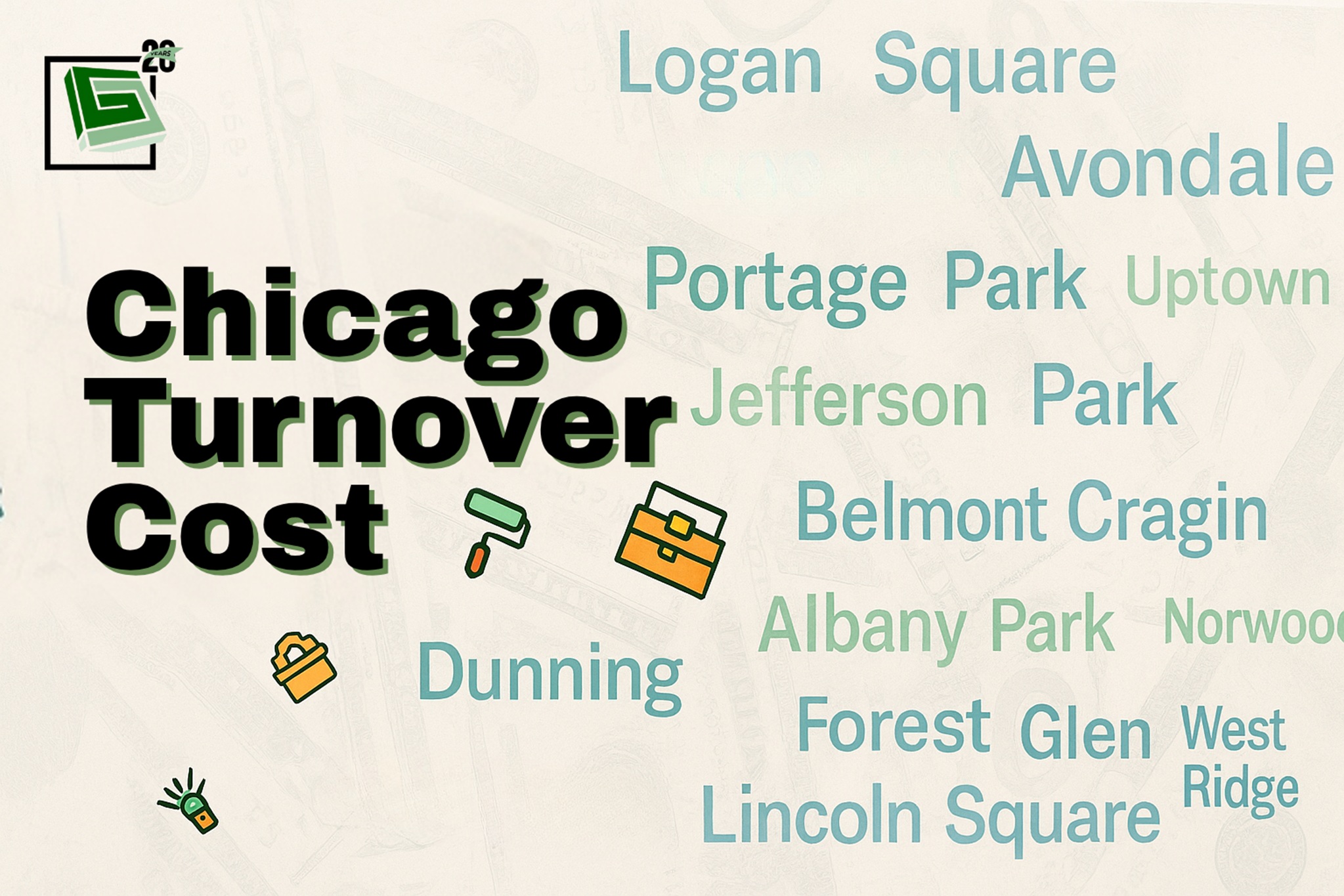
Author: Mark Ainely | Partner GC Realty & Development & Co-Host Straight Up Chicago Investor Podcast
Those newer to investing in rental property in Chicago often assume their biggest cost is over after purchasing a new property. It’s true that the purchase cost may be the biggest amount they pay at once (but not always!). However, property owners need to prepare for many additional costs along the way.
One cost that typically surprises property owners in Northwest Chicago is preparing a rental for a new tenant. Sometimes, the outgoing tenant leaves damage that needs repairing. More often than not, though, owners find they have several maintenance or repairs to make simply due to age and normal wear and tear.
GC Realty & Development, LLC has performed 190 turnover projects in Northwest Chicago since 2022. From those projects, we’ve amassed incredible data on what it takes to turn over a rental property in these neighborhoods. So what does a rental turnover cost in Northwest Chicago? Read on to find out!
Common Projects Completed During Turnover
Regardless of other conditions with a property, we have several projects we’ll perform every single time a tenant moves out of a rental we manage. Others are common updates we see owners having to make based on the average age of properties in the area. These are part of our 7-Point Turnover Process.
Services on Every Turnover
Without question, every single time a tenant moves out, we conduct the following tasks:
Rekey or change door locks (Its the law)
Change the batteries in smoke and carbon monoxide alarms
Change the batteries in the thermostat
Replace the furnace filter
Conduct a professional turnover deep clean
Other Common Turnover Projects
Other common turnover projects include removing items left behind by the previous tenant (you’d be surprised how much stuff we find). We’ll also paint the walls, either partial or full paint jobs, depending on what the rental needs. A full paint typically lasts 3-5 years based on “normal wear and tear” standards.
Finally, we go through and conduct what may be considered little things, but make a huge first impression on incoming tenants:
Replace burned-out or missing light bulbs
Tighten towel bars, toilet paper holder, and the knobs on doors, cabinets, and bifolds.
Replace toilet seats, as needed
Ensure Adherence to the GC Property Standards™
Every rental property must adhere to GC Realty & Development, LLC’s GC Property Standards™. It doesn’t matter whether the property is from a new client or the turnover of a property from an existing one. GC Property Standards™ ensure that every property we manage is functional, safe, and clean. Adhering to these three pillars provides a consistently high standard for our rental properties. This way, regardless of which neighborhood a property is located in, we know our tenants will have the best possible start to their lease with us.
How Often Can I Expect a Turnover?
The average tenancy for tenants on the Northwest side of Chicago is roughly 32 months so I tell investors you can expect to go through this process 3 times every 10 years.
You can add in there GC's average tenancy is 42 months.
Northwest Side-Specific Costs
Most landlord guides sugarcoat the journey. This one doesn’t.
Download What They Don’t Tell You About Real Estate Investing and get the real lessons Chicago investors learn the hard way—before you make the same mistakes.
Difference in Cost Between Types of Rental Properties
From 2022 through mid-2025, we conducted 190 turnovers throughout the Northwest Side. Based on the data from those turnovers, we found that preparing a rental property for the Northwest Chicago market costs roughly $3,100. That said, actual projects to get a home rent-ready ranged from $130 to nearly $12k. Full disclosure: those owners on the higher end knew they were getting into some major overhauls.
To give you a more defined picture, we’ve broken those averages and ranges down by the type of rental property being turned over. Note: We did not conduct any commercial property turnovers during that timeframe.
Single Family Home
From 2022 through mid-2025, we saw far fewer single-family home turnovers (just three), and the average turnover cost was $3,700.
Multi-Family Property
GC Realty & Development, LLC oversaw the turnover of 147 multi-family properties, which included two-flat, three-flat, four-flat, or greater properties. Basically, apartment turnovers. The average turnover cost was $3,200, ranging from $1,400 to $11,900.
Condo/Townhouse
From 2022 through mid-2025, we conducted 37 turnovers of condos and townhouses on the Northwest Side of Chicago. The average cost of turnovers was slightly less than $2,800, ranging from $1,100 to $6,300.
Mixed-Use Property
Mixed-use properties typically include a building with a storefront at the street level and residential living areas on other floors. These conditions and floor plans tend to be pretty close to the multi-family scenario. Between 2022 and mid-2025, we conducted just three turnovers of these properties, costing an average of $2,900.
Other Factors Impacting the Northwest Side of Chicago
In addition, the Northwest Side Preservation Ordinance (aka 606 Ordinance), which was meant to protect affordable housing and give tenants a chance to become homeowners, has created serious hurdles for landlords who do not want to renew a lease with a current tenant.
In addition, Chicagoland and Cook County have some of the friendliest tenant laws in the nation: the Residential Landlord-Tenant Ordinance (RLTO). Understanding how to navigate these rules as a landlord is vital to avoiding legal trouble.
The Cook County RTLO has tripped up countless landlords with rules they didn’t even know existed—until a tenant lawyer got involved. Don’t let a small mistake turn into a lawsuit.
Download What You Must Know About Renting in Cook County To Avoid Getting Sued and learn the rules every landlord needs to follow.
GC Realty & Development, LLC Difference
These numbers can provide landlords and potential property owners in the Northwest Side neighborhoods with a rough estimate of costs to turn over a rental. Remember, these numbers do not include necessary repairs, emergency calls from tenants, or add-value upgrades. These are strictly the nuts and bolts of prepping a property from one tenant to the next.
Another critical aspect of these numbers is that they reflect the processes we’ve created and the professional relationships we foster with trusted vendors. The longer a property sits vacant, the more of a drag it places on the owner’s ROI. So minimizing that downtime with efficient processes and on-call professionals to do necessary work is key.
However, the MOST important turnovers are the ones that never happen because you have happy, paying tenants who feel respected and safe in your property.

 Vendor Portal
Vendor Portal



